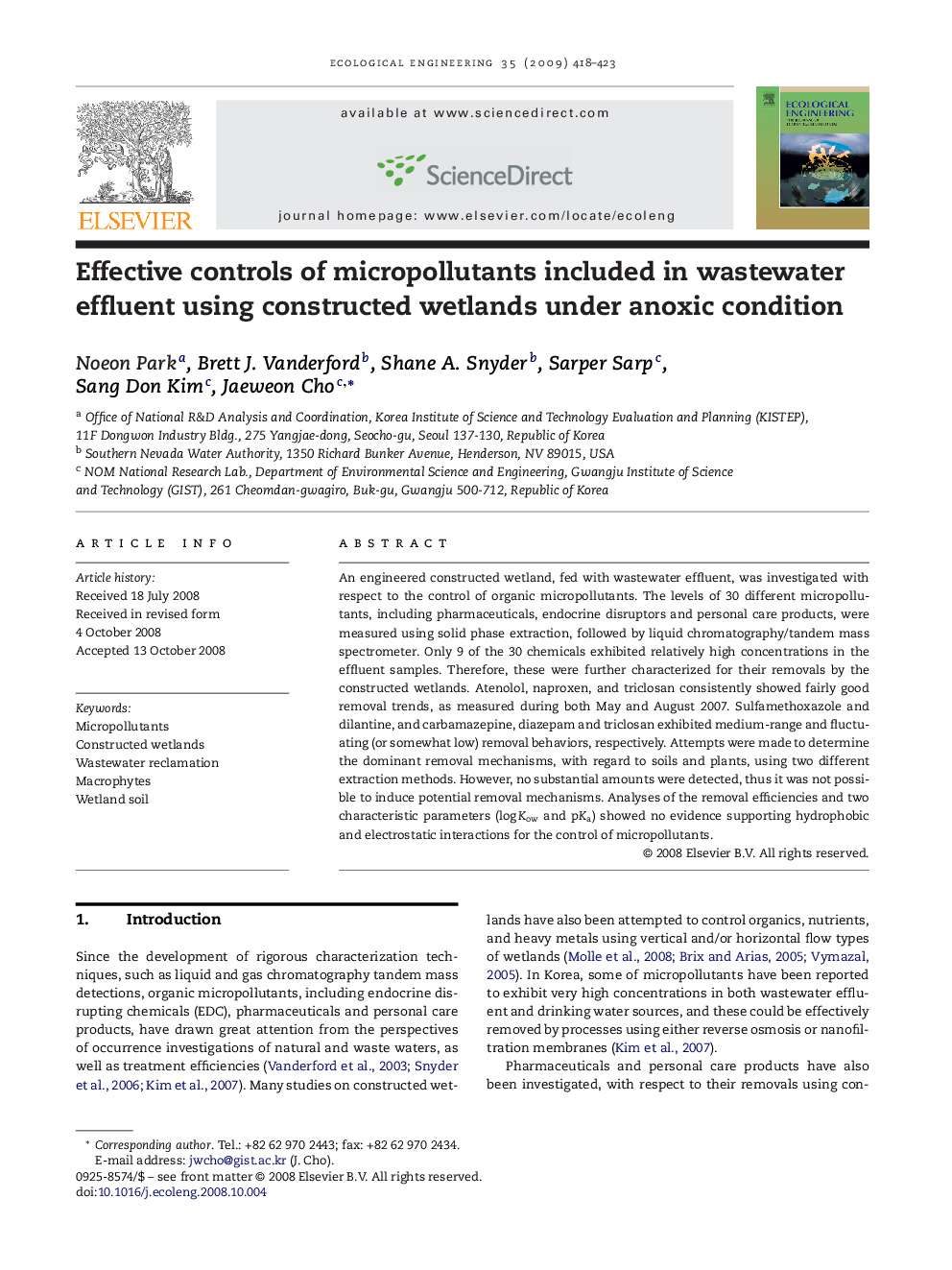| Article ID | Journal | Published Year | Pages | File Type |
|---|---|---|---|---|
| 4390544 | Ecological Engineering | 2009 | 6 Pages |
Abstract
An engineered constructed wetland, fed with wastewater effluent, was investigated with respect to the control of organic micropollutants. The levels of 30 different micropollutants, including pharmaceuticals, endocrine disruptors and personal care products, were measured using solid phase extraction, followed by liquid chromatography/tandem mass spectrometer. Only 9 of the 30 chemicals exhibited relatively high concentrations in the effluent samples. Therefore, these were further characterized for their removals by the constructed wetlands. Atenolol, naproxen, and triclosan consistently showed fairly good removal trends, as measured during both May and August 2007. Sulfamethoxazole and dilantine, and carbamazepine, diazepam and triclosan exhibited medium-range and fluctuating (or somewhat low) removal behaviors, respectively. Attempts were made to determine the dominant removal mechanisms, with regard to soils and plants, using two different extraction methods. However, no substantial amounts were detected, thus it was not possible to induce potential removal mechanisms. Analyses of the removal efficiencies and two characteristic parameters (log Kow and pKa) showed no evidence supporting hydrophobic and electrostatic interactions for the control of micropollutants.
Related Topics
Life Sciences
Agricultural and Biological Sciences
Ecology, Evolution, Behavior and Systematics
Authors
Noeon Park, Brett J. Vanderford, Shane A. Snyder, Sarper Sarp, Sang Don Kim, Jaeweon Cho,
